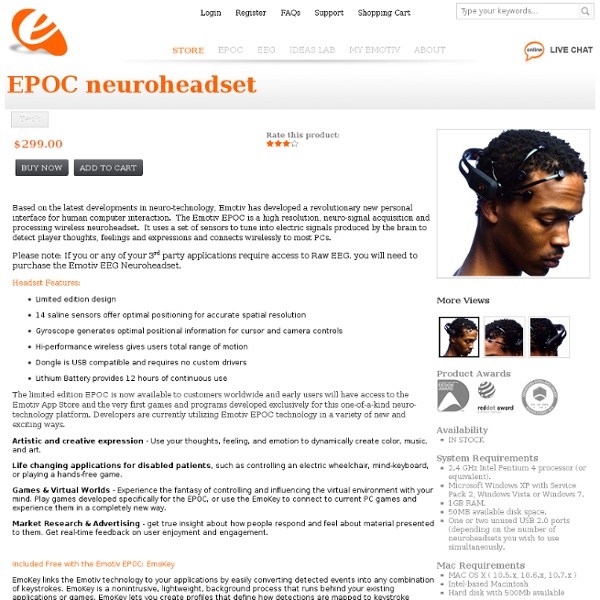High Resolution EEG
Artistic and creative expression - Use your thoughts, feeling, and emotion to dynamically create color, music, and art. Life changing applications for disabled patients, such as controlling an electric wheelchair, mind-keyboard, or playing a hands-free game. Games & Virtual Worlds - Experience the fantasy of controlling and influencing the virtual environment with your mind. Play games developed specifically for the EPOC, or use the EmoKey to connect to current PC games and experience them in a completely new way. Market Research & Advertising - get true insight about how people respond and feel about material presented to them. Included Free with the Emotiv EPOC: EmoKey EmoKey links the Emotiv technology to your applications by easily converting detected events into any combination of keystrokes.
Interactive Android Application for EEG Biofeedback | C World
This post details the research and development of a mobile application which receives and annotates neurofeedback data from a commercial electroencephalography (EEG) device with a single dry electrode. The system is designed to convert any Android mobile phone into a portable storage device that passively records the user’s brainwaves while providing an interface to manually annotate the data with daily activities and moods. This application has the potential to provide numerous benefits to medical fields including but not limited to: neuroscience, psychology, psychiatry, and head and neck trauma. Useful Links This project began as a personal infatuation with brain-computer interfacing after I discovered some fascinating interactive games and applications that people were developing using EEG technology. Problem Statement Today, Neuroscientists, Psychologists, and other physicians use neurofeedback to diagnose, predict, and treat certain neurological and pathological conditions. Arduino
Brain-Controlled RC Helicopter
This Instructable will show you how take a Radio Controller Helicopter and modify the remote control hardware such that it can be operated by free, open source computer software and flown based on brainwave measurements of concentration and relaxation taken by consumer-grade EEG headsets. The software used in this Instructable consists of two applications, Puzzlebox Synapse and Puzzlebox Brainstorms. The former connects to commercially available consumer-grade EEG headsets, such as the NeuroSky MindSet or Emotiv EPOC. The latter connects to the transmitter chip extracted from the RC Helicopter's remote control and issues flight commands and settings based on detections received from Puzzlebox Synapse. Software (including source code) is available for download from the project website: Note: Items in bold can be found in the Glossary and Link Index listed the final step of this Instructable.
Puzzlebox Brainstorms
Mind Controlling Angry Birds
Using emotiv EPOC neuro-headset to control the Angry Birds game. Mapping mouse movement and mouse left button click using emotive EmoKey KeyMap and GlovePIE. GlovePIE is used to map the emotive "Push" to mouse left button click. emotiv headset connected to a windows version of angry birds, running on Intel's AppUp applications engine. using GlovePie which has a flavor that supports mapping to emotiv. pictures taken at KinnerNet 2011 Unconference.
Related:
Related:



